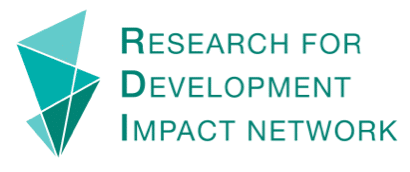Climate change, social justice and inclusion
We are already experiencing the adverse effects of climate change including droughts, floods, sea-level rises, extreme weather events and loss of biodiversity. However, the negative impacts of climate change are unevenly distributed. Disadvantaged communities have contributed least to greenhouse gas emissions, and already marginalized individuals and communities face the greatest threats to their survival, livelihoods and well-being.
Women, children, indigenous people, people in poverty, racial and ethnic minorities, migrants and internally displaced persons and persons with disabilities, are among those most vulnerable to the impacts of climate change. Furthermore, climate change is exacerbating social and economic inequalities. Therefore, for equitable and sustainable development, climate change adaptation needs to include those most affected.
Green Growth
Governments have adopted green growth approaches that promote economic gain and advances in environmental value. Focusing on economic growth can reduce income poverty in aggregate terms, however, policies need to address poverty because inequality inhibits growth and environmental sustainability.
Addressing poverty and inequality is important because the poor are among those most impacted by climate change, and it can in part, increase people’s capacity to adapt to climate change. However, addressing who is involved and who benefits from climate change adaptation, involves addressing access to rights and addressing power structures.
Human rights and Climate Adaptation
A human rights approach recognizes that climate change threatens human rights, including the rights to life, development, health, food, water and sanitation, self-determination, and cultural rights. It emphasizes human rights in all climate adaptation policies and programs. Doing so, empowers groups and peoples most affected by climate change, to make claims for states to address their human rights obligations. Human rights principles, including equality, participation and inclusion, also guide all phases of the climate action and decision making process.
Inclusive Climate Action
Inclusive climate action is concerned with ensuring that climate adaptation and mitigation considers equity, and that the benefits and burdens of policies are fairly distributed. It aims to transform social institutions and arrangements, by addressing both climate change and social and economic inequality, for instance, gender transformative climate change action.
Inclusive climate action works to reduce the effects of climate change on the most vulnerable social groups and seeks to implement climate actions that directly benefit them and improve their ability to adapt. It does so by engaging a wide range of stakeholders in decision-making and recognizes that those most affected by climate change should be represented in policy processes.
Community inclusion also ensures the success of climate adaptation programs by addressing the different vulnerabilities, development priorities and social contexts.One way of engaging communities, civil society and governments in climate adaptation, is by working with these groups to identify how climate change and development affects ecosystems and biodiversity, and in turn affects health, livelihoods, natural resources and social cohesion.
Other aspects of inclusive climate action include tracking progress and adjusting programs and policies accordingly, and forming partnerships with governments, business and NGOs.
Read the full articles:
- Inclusive climate action: an emerging perspective (Report, 508 KB, 15 mins)
- Climate change, social justice: Making the case for community inclusion (Book chapter, 1 hour)
- Why social inclusion matters for green growth (Blog, 10 mins)
- The impacts of climate change on the effective enjoyment of human rights (webpage, 5 mins)
- Frequently asked questions on human rights and climate change (PDF 379KB, 1 hour)
- Engagement in biodiversity conservation and climate change adaptation in Papua New Guinea (Facilitators guide, 20 mins, PDF 10.03 MB)
- Gender Transformative Climate Action in the Pacific (Report, PDF 2.16 MB, 1 hour)
- Gender Transformation Climate Change Action in the Pacific: Framework and Guidance Tool (tool, PDF 2.91 MB, 15 mins)



